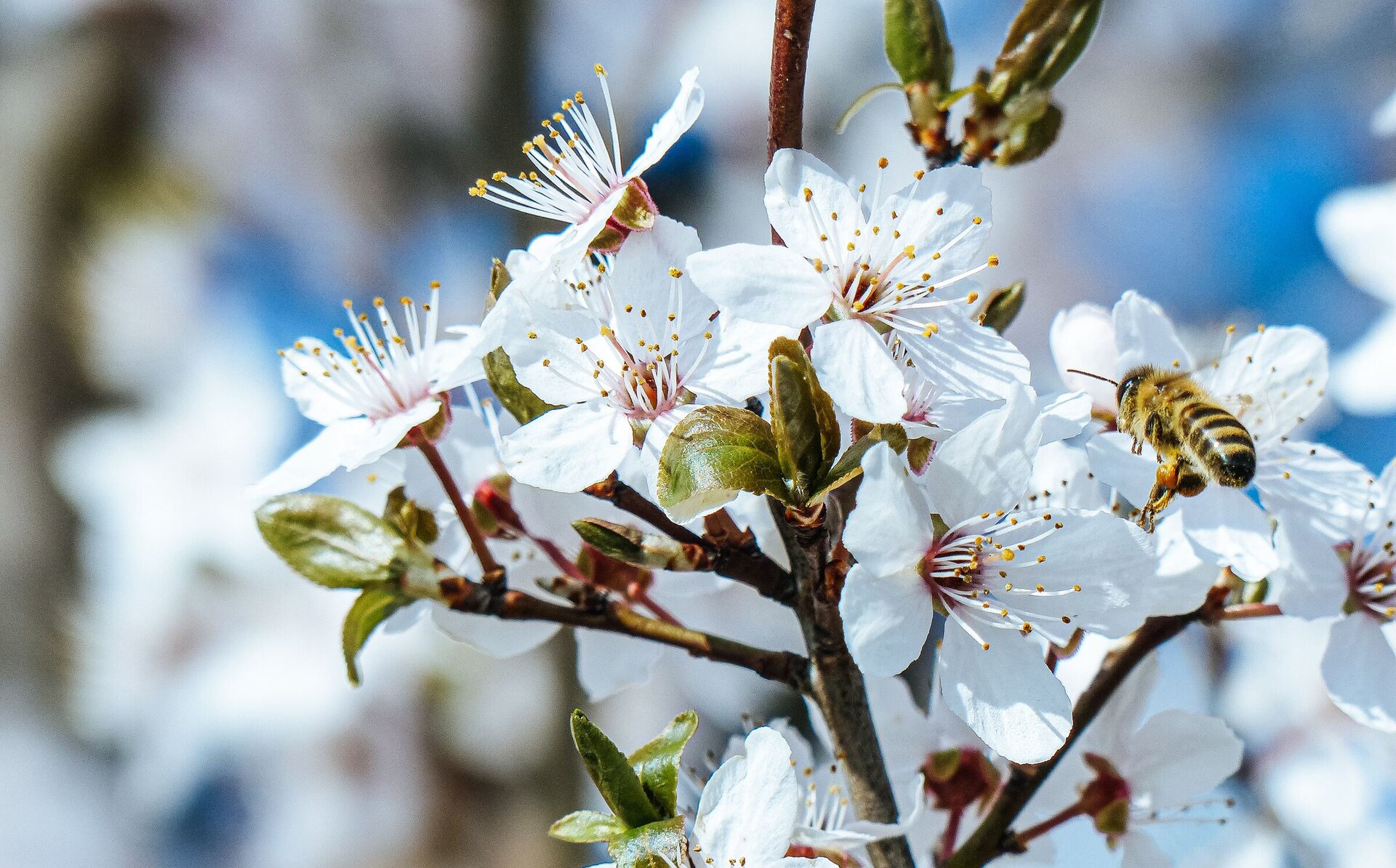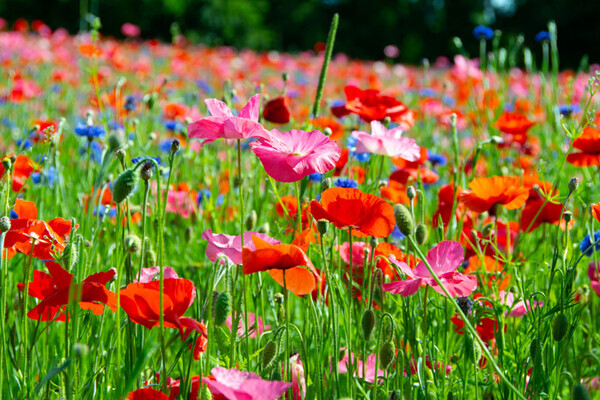As you may know this month is 'Bee Aware Month' and with spring upon us it's a great time to focus on making sure our Kiwi bees have plenty of food to keep them buzzing!
Bees forage on flowers for nectar, which provide carbohydrates, and pollen, for protein. These are important for growth and energy. Well-nourished bees are more capable of fending off disease and parasites. And you may be aware there are more and more diseases and parasites that affect bees in New Zealand.
But what can we do? There is plenty we can do, we can plant bee friendly plants, not use bee harmful chemicals in our gardens and supply water for them. I'll be covering these aspects in blogs this month. First I'll cover what you can plant at your place to feed the bees.
How to Encourage Bees To Your Garden
Planting in large clusters of the same species of flower will attract bees into your garden
Plant flowers for each season, a steady source of nectar and pollen all year round will help ssustain the bees. Below are some ideas of what you grow in your garden for bees.
Herbs:
- Basil
- Chives
- Lavender
- Rosemary
- Bergamot
- Coriander
- Lemon Balm
- Sage
- Borage
- Dill
- Marshmallow
- Spearmint
- Calendula
- Echinacea
- Oregano
- Tarragon
- Caraway
- Garlic Chives
- Parsley
- Thyme
- Catnip
- Lamb’s Ears
- Rocket
- Verbena
Wildflowers:
Wildflowers are naturally organic—they are not susceptible to bugs or diseases, can help control garden pests and they attract bees and beneficial insects into the garden. We sell a wildflower seed mix with all the following flowers included, and the great thing is all proceeds go to the National Beekeepers Association for research into helping our NZ bees.
- Calendula
- Plains coreopsis
- Toadflax
- Baby Blue Eyes
- China aster
- Forget-me-not
- Blue Linum
- Corn Poppy
- Mixed cornflowers
- Blanket flower
- Sweet Alyssum
- Sweet Mignonette
- Farewell to spring
- Globe Gilia
- Virginia Stock
Other Plants / Shrubs / Flowers:
- Abelias
- Foreget-me-nots
- Lavender
- Seaside Daisy
- Balsam
- Fuchsias
- Marigolds
- Sumacs
- Begonias
- Geranium
- Michaelmas daisy
- Summer phlox
- Butterfly bushes
- Giant Hyssop
- Nasturtiums
- Sunflower
- California Bluebell
- Gladioli
- Penstemon
- Sweet Alyssum
- Carnations
- Globe thistles
- Petunias
- Sweet Peas
- Cornflowers
- Gorse
- Phacelia
- Wild Lilac
- Cosmos
- Hebe
- Poppy
- Wild & Old Fashioned Roses
- Crape myrtle
- Hollyhock
- Salvia
- Zinnia
Trees:
- Australian Gum
- Hazelnuts
- Napaka
- Three Finger
- Alders
- Heketara
- NZ Jasmine
- NZ Tulip tree
- Bottlebrush
- Kanuka
- Oaks
- Tupelos
- Cabbage Tree
- Kohuhu
- Pohutukawa
- Viburnum
- Camellia
- Koromiko
- Rata
- Weeping Kowhai
- Cotoneaster
- Lacebark
- Rewarewa
- Willows
- Five Finger
- Lemonwood
- Sycamores
- Wisteria
- Harakeke
- NZ Flax
- Manuka
- Tawari
Vegetables:
- Buckwheat
- Cucumbers
- Spinach
- Capsicums
- Eggplant
- Sweetcorn
- Carrot
- Pumpkins, squash
- Tomatoes
- Courgettes
- Silver Beet
- Zucchini
Please note: growing flowers among your vegetables is a great way to encourage bees and discourage pest insects. Find out more about companion planting.
Fruit & Berries:
- Apple
- Crabapples
- Lemons
- Peaches
- Berries
- Elderberries
- Limes
- Pear
- Blackberries
- Flowering quinces
- Melons
- Persimmons
- Blueberries
- Grapefruit
- Oranges
- Plub
- Cherries
- Kiwifruit
- Passion Fruit
- Strawberry
Of course there are many more, so do some more research for plants in your area. Garden catalogues often make note of which plants attract bees.
Here’s some tips for choosing plants:
- Look for flowers with single layers of petals instead of doubles or triples
- Select simple traditional flowers that are not highly modified
- Choose flowers that have big open ‘bowl’ type flowers, that give bees easy access to the nectar and pollen
- Choose sunny spots with shelter from the wind, over shade.
- Remember that bees are attracted to abundance & quality of pollen and nectar, density of flowers, size of plant, fragrance and easy access to the flower's insides. So choose plants carefully, plant in large clusters of the same species of plants together.
- Include different sized and shaped flower.
- Try to plant flowers for each season so bees have a source of nectar and pollen all year round.
Read more on what else you can do to help the bees in NZ
Where would we be without bees
Avoid insecticides that affect bees
Here's an interesting article about creating a wildlife sanctuary in your backyard (even though we may not have some of this wildlife in NZ the tips are still great)








